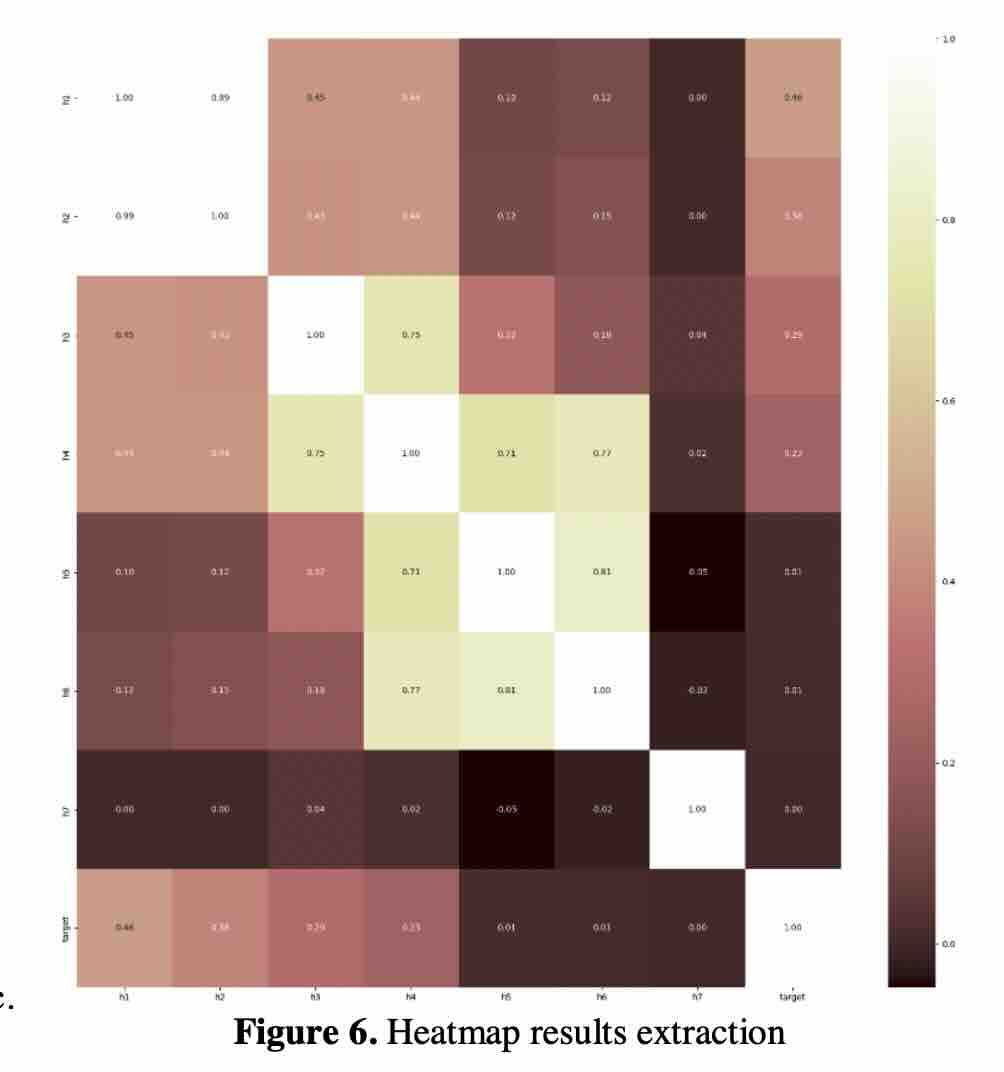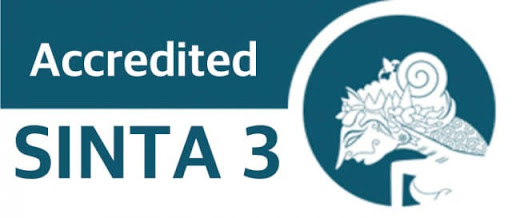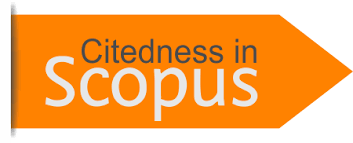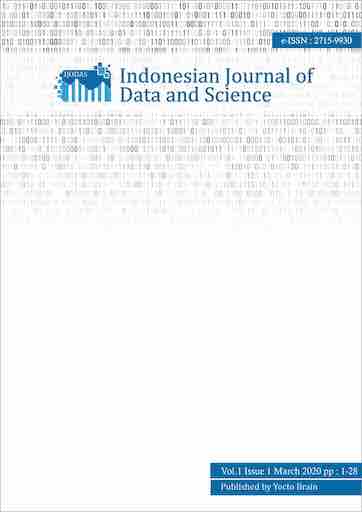Classification of Rice Grain Varieties Using Ensemble Learning and Image Analysis Techniques
DOI:
https://doi.org/10.56705/ijodas.v5i1.129Keywords:
Machine Learning, Rice Grain Classification, Bagging Meta-Estimator, Ensemble Learning, Image Processing, Quality ControlAbstract
This research explored the efficacy of machine learning techniques, specifically the Bagging meta-estimator, in the classification of rice grain images. Utilizing a dataset composed of 45,000 images of Arborio, Basmati, and Jasmine rice varieties, a 5-fold cross-validation was employed to evaluate the model's performance. The results were highly promising, with the model consistently achieving over 96% in accuracy, precision, recall, and F1-score across all folds, indicating its robustness and reliability. The study confirmed that ensemble learning techniques could significantly improve the classification accuracy over single classifier systems in agricultural applications. The findings offer a significant contribution to automated agricultural processes, suggesting that machine learning can greatly enhance the efficiency and precision of rice variety classification. These results pave the way for further research into the integration of such models into agricultural quality control and provide a foundation for the exploration of advanced image processing and deep learning techniques for improved performance. Future research directions include expanding the model to encompass a wider variety of crops and integrating additional data modalities to refine classification accuracy further. Practical applications should explore the incorporation of this technology into existing agricultural systems to maximize the benefits of automation in quality control.
Downloads
References
H. Kaur, “Bagging: An Ensemble Approach for Recognition of Handwritten Place Names in Gurumukhi Script,” ACM Trans. Asian Low-Resource Lang. Inf. Process., vol. 22, no. 7, 2023, doi: 10.1145/3593024.
R. Samantaray, “Performance Analysis of Machine Learning Algorithms Using Bagging Ensemble Technique for Software Fault Prediction,” 2023 6th International Conference on Information Systems and Computer Networks, ISCON 2023. 2023, doi: 10.1109/ISCON57294.2023.10111952.
Y. Xu, “Bagging ensemble method of probabilistic forecasting for multiple wind farms by sparse vector autoregression,” Dianli Xitong Baohu yu Kongzhi/Power Syst. Prot. Control, vol. 51, no. 7, pp. 95–106, 2023, doi: 10.19783/j.cnki.pspc.220970.
A. A. Ewees, “Performance analysis of Chaotic Multi-Verse Harris Hawks Optimization: A case study on solving engineering problems,” Eng. Appl. Artif. Intell., vol. 88, 2020, doi: 10.1016/j.engappai.2019.103370.
P. Sharma, “Performance analysis of deep learning CNN models for disease detection in plants using image segmentation,” Inf. Process. Agric., vol. 7, no. 4, pp. 566–574, 2020, doi: 10.1016/j.inpa.2019.11.001.
S. Rahman, “Performance analysis of boosting classifiers in recognizing activities of daily living,” Int. J. Environ. Res. Public Health, vol. 17, no. 3, 2020, doi: 10.3390/ijerph17031082.
H. Azis, L. Syafie, F. Fattah, and ..., “Unveiling Algorithm Classification Excellence: Exploring Calendula and Coreopsis Flower Datasets with Varied Segmentation Techniques,” 2024 18th Int. …, 2024, doi: 10.1109/IMCOM60618.2024.10418246.
A. R. Manga, M. A. F. Latief, A. W. M. Gaffar, and ..., “Hyperparameter Tuning of Identity Block Uses an Imbalance Dataset with Hyperband Method,” 2024 18th …, 2024, doi: 10.1109/IMCOM60618.2024.10418427.
R. F. Syam, “Performance Comparison Analysis of Classifiers on Binary Classification Dataset,” Indones. J. Data Sci., 2023, doi: 10.56705/ijodas.v4i2.77.
D. Ratnasari, “Comparison of Performance of Four Distance Metric Algorithms in K-Nearest Neighbor Method on Diabetes Patient Data,” Indones. J. Data Sci., 2023, doi: 10.56705/ijodas.v4i2.71.
N. Rismayanti and A. P. Utami, “Improving Multi-Class Classification on 5-Celebrity-Faces Dataset using Ensemble Classification Methods,” Indones. J. Data …, 2023, doi: 10.56705/ijodas.v4i2.78.
T. Wu, “Image Segmentation via Fischer-Burmeister Total Variation and Thresholding,” Adv. Appl. Math. Mech., vol. 14, no. 4, pp. 960–988, 2022, doi: 10.4208/AAMM.OA-2021-0126.
E. Turajlic, “Multilevel image thresholding based on Rao algorithms and Kapur’s Entropy,” 2022 28th International Conference on Information, Communication and Automation Technologies, ICAT 2022 - Proceedings. 2022, doi: 10.1109/ICAT54566.2022.9811171.
L. Abualigah, “Multilevel thresholding image segmentation using meta-heuristic optimization algorithms: comparative analysis, open challenges and new trends,” Appl. Intell., vol. 53, no. 10, pp. 11654–11704, 2023, doi: 10.1007/s10489-022-04064-4.
S. Hidayat, H. M. T. Ramadhan, and ..., “Comparison of K-Nearest Neighbor and Decision Tree Methods using Principal Component Analysis Technique in Heart Disease Classification,” Indones. J. …, 2023, doi: 10.56705/ijodas.v4i2.70.
H. Oumarou and N. Rismayanti, “Automated Classification of Empon Plants: A Comparative Study Using Hu Moments and K-NN Algorithm,” Indones. J. Data …, 2023, doi: 10.56705/ijodas.v4i3.115.
C. D. Suhendra, E. Najwaini, E. Maria, and ..., “A Machine Learning Perspective on Daisy and Dandelion Classification: Gaussian Naive Bayes with Sobel,” Indones. J. …, 2023, doi: 10.56705/ijodas.v4i3.112.
G. Giri, I. A. Musdar, H. Angriani, and ..., “Enhancing Disease Management in Mango Cultivation: A Machine Learning Approach to Classifying Leaf Diseases,” Indones. J. …, 2023, doi: 10.56705/ijodas.v4i3.111.
R. Setiawan, H. Zein, R. A. Azdy, and ..., “Rice Leaf Disease Classification with Machine Learning: An Approach Using Nu-SVM,” Indones. J. …, 2023, doi: 10.56705/ijodas.v4i3.114.
F. T. Admojo and B. S. W. Poetro, “Comparative Study on the Performance of the Bagging Algorithm in the Breast Cancer Dataset,” … Artif. Intell. Med. …, 2023, doi: 10.56705/ijaimi.v1i1.87.
R. Setiawan, A. Parewe, A. J. Latipah, and ..., “Assessing Bagging-meta Estimator in Imbalanced CT Kidney Disease Classification: A Focus on Sobel and Hu Moment Techniques,” … Artif. Intell. …, 2023, doi: 10.56705/ijaimi.v1i2.100.
R. A. Azdy, R. F. Syam, E. Faizal, and ..., “Performance Evaluation of Bagging Meta-Estimator in Lung Disease Detection: A Case Study on Imbalanced Dataset,” Int. J. …, 2023, doi: 10.56705/ijaimi.v1i2.96.
V. Sridhar, “Bagging ensemble mean-shift Gaussian kernelized clustering based D2D connectivity enabled communication for 5G networks,” e-Prime - Adv. Electr. Eng. Electron. Energy, vol. 7, 2024, doi: 10.1016/j.prime.2023.100400.
M. Rafało, “Cross validation methods: Analysis based on diagnostics of thyroid cancer metastasis,” ICT Express, vol. 8, no. 2, pp. 183–188, 2022, doi: 10.1016/j.icte.2021.05.001.
T. R. Mahesh, “AdaBoost Ensemble Methods Using K-Fold Cross Validation for Survivability with the Early Detection of Heart Disease,” Comput. Intell. Neurosci., vol. 2022, 2022, doi: 10.1155/2022/9005278.
K. M. Bain, “Cross-validation of three Advanced Clinical Solutions performance validity tests: Examining combinations of measures to maximize classification of invalid performance,” Appl. Neuropsychol., vol. 28, no. 1, pp. 24–34, 2021, doi: 10.1080/23279095.2019.1585352.
O. Karal, “Performance comparison of different kernel functions in SVM for different k value in k-fold cross-validation,” Proc. - 2020 Innov. Intell. Syst. Appl. Conf. ASYU 2020, 2020, doi: 10.1109/ASYU50717.2020.9259880.
H. Azis, P. Purnawansyah, N. Nirwana, and ..., “The Support Vector Regression Method Performance Analysis in Predicting National Staple Commodity Prices,” Ilk. J. …, 2023, doi: 10.33096/ilkom.v15i2.1686.390-397.
A. Nurul, Y. Salim, and H. Azis, “Analisis performa metode Gaussian Naïve Bayes untuk klasifikasi citra tulisan tangan karakter arab,” Indones. J. Data Sci., vol. 3, no. 3, pp. 115–121, 2022, doi: 10.56705/ijodas.v3i3.54.
D. Anggreani, I. A. E. Zaeni, A. N. Handayani, H. Azis, and A. R. Manga’, “Multivariate Data Model Prediction Analysis Using Backpropagation Neural Network Method,” in 2021 3rd East Indonesia Conference on Computer and Information Technology (EIConCIT), 2021, pp. 239–243, doi: 10.1109/EIConCIT50028.2021.9431879.
H. Azis, F. T. Admojo, and E. Susanti, “Analisis Perbandingan Performa Metode Klasifikasi pada Dataset Multiclass Citra Busur Panah,” Techno.Com, vol. 19, no. 3, 2020, doi: 10.33633/tc.v19i3.3646.
H. Azis, F. Fattah, and P. Putri, “Performa Klasifikasi K-NN dan Cross-validation pada Data Pasien Pengidap Penyakit Jantung,” Ilk. J. Ilm., vol. 12, no. 2, pp. 81–86, 2020, doi: 10.33096/ilkom.v12i2.507.81-86.
M. M. Baharuddin, T. Hasanuddin, and H. Azis, “Analisis Performa Metode K-Nearest Neighbor untuk Identifikasi Jenis Kaca,” Ilk. J. Ilm., vol. 11, no. 28, pp. 269–274, 2019, doi: 10.33096/ilkom.v11i3.489.269-274.

Downloads
Published
Issue
Section
License
Authors retain copyright and full publishing rights to their articles. Upon acceptance, authors grant Indonesian Journal of Data and Science a non-exclusive license to publish the work and to identify itself as the original publisher.
Self-archiving. Authors may deposit the submitted version, accepted manuscript, and version of record in institutional or subject repositories, with citation to the published article and a link to the version of record on the journal website.
Commercial permissions. Uses intended for commercial advantage or monetary compensation are not permitted under CC BY-NC 4.0. For permissions, contact the editorial office at ijodas.journal@gmail.com.
Legacy notice. Some earlier PDFs may display “Copyright © [Journal Name]” or only a CC BY-NC logo without the full license text. To ensure clarity, the authors maintain copyright, and all articles are distributed under CC BY-NC 4.0. Where any discrepancy exists, this policy and the article landing-page license statement prevail.














